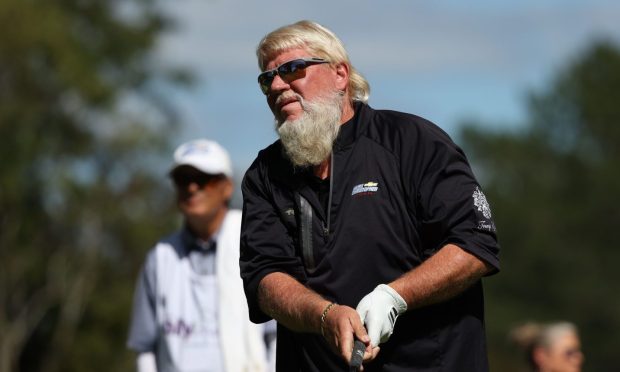Scottish Golf want to run the tee-time booking system for every golf club in the country to plough resources back into the game.
Facing cutbacks of £400,000 to their club support and development programmes due to slashing of government funding, the governing body wants to develop a Customer Resource Management (CRM) system for all its affiliated clubs – similar to those operating in France and Australia – which will form a database of Scotland’s 200,000 golf club members.
With that, they can launch an integrated national tee-time booking platform for all of Scotland’s clubs and generate a £4 million investment which will be put back into upgrading courses and facilities.
The initial cost of the IT required for the CRM system will require a significant rise in the SGU levy on all golf memberships – raising it from the current £11.25 per annum to possibly as much as £25 – but the benefits will be multifold, according to Scottish Golf CEO Blaine Dodds.
Dodds will place the plan before a Special General Meeting of Scottish Golf on December 2 which he described as “a line in the sand” for the future of the game in Scotland.
“I think it’s the most important decision in the recent history of golf in Scotland,” he said. “The status quo is not even that, if we don’t get this over the line we’ll be making cutbacks amounting to £400,000 in club support and development programmes.”
Instead, the target is £4 million of extra funding – the same as the annual turnover of the organisation – which can be raised by forming the CRM system and from that an integrated tee-time booking system. In addition, a new International Golf Licence will be implemented – effectively a nominal tax on international visitors amounting to $10 a head per year, paid at their first point of sale at a golf club in Scotland.
The money will be reinvested in clubs throughout the country in club and greenkeeping support, facilities and development programmes.
“Our pitch is, we’re all in this together, we all love golf and we want it to succeed,” said Dodds.” So with this plan we can make it succeed, we can bring in more resource, and that will be not for profit, here’s how we’ll invest it into your club, your programmes.
“That comes from 94p to maybe £2 a month – a couple of pints or a sleeve of balls over a year – and we’ll be totally transparent with what we do with that investment.”
The asset Scottish Golf are trying to sell to sponsors is the database of club membership, but it’s also something they hope to change. Presently, just 11 per cent of golf club members are under 35, more than half are between the ages of 55 and 74, and just 14 per cent are women.
The governing body also want to halt the movement away from club membership to golfers who simply take cut-price offers – sometimes discounted by private operators having already been discounted by clubs – to play where they please.
“I think as the governing body the only way of growing the sport is with a solid platform and that is within clubs,” said Dodds. “They’re a safe place for kids to learn the game, where qualified coaches and teachers are available, and all the benefits of being part of a community and club and all that entails.
“The alternative is clubs are finished and it’s just a bland, soulless facility where you pay £40 to play a round. Will that produce growth? I don’t think so.”
One of the biggest stumbling blocks could be the successful clubs that run their own booking systems or hire IT companies to run them, but Dodds believes that they too will benefit for the greater good of the game in Scotland as a whole.
“There are 100 clubs in Scotland doing well, 100 clubs struggling with issues, and maybe 300 just about surviving,” said Dodds. “If we take the view that the successful clubs don’t need to change, we’re going to be left with those few clubs that are doing well.
“This is a way to invest in golf for the greater good to make sure all those survive and we’ll all benefit.
“We don’t see it as mandatory as such but that all will benefit from being affiliated. You’ll make savings on not having to fund your own system, we’ll supply it and we’re going to consult with successful clubs to have an input in the specification and procurement process.”




